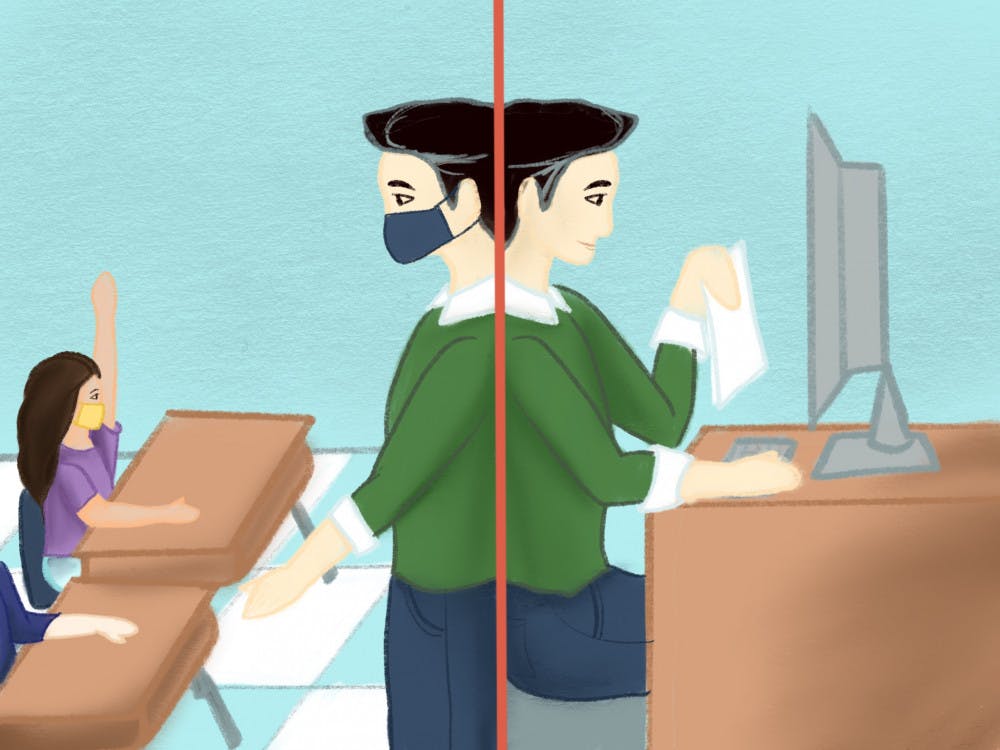Toni Armeda is exhausted from her long days teaching at Gainesville High School.
The 58-year-old English teacher works from 7 a.m. to 4 p.m. at school with a 30-minute lunch break, though the school day runs from 8:30 a.m. to 2:42 p.m. She continues to work more from home after school and on weekends.
She’s one of 924 HyFlex teachers in Alachua County Public Schools adapting to educational changes brought on by the COVID-19 pandemic.
When Alachua County Public Schools finalized its opening plan, many parents and teachers were frustrated by the HyFlex model, where teachers balance in-person and online students simultaneously. However, some worry they don’t have the technology tools to accomplish the feat.
Armeda teaches three Advanced Placement English HyFlex classes. In some periods, she has more in-person students. In others, she has more online students. One thing is the same: She said HyFlex makes it difficult to navigate two seperate groups.
She said she can no longer have students partner up, share ideas on the whiteboard or visit other locations to switch up the daily schedule.
Armeda, who has been a Florida high school teacher for 34 years, doesn’t see a solution to the problem.
“Teaching virtually, in my opinion, is not effective,” she wrote. “Teaching with a mask on with social distancing and no communal activities is ineffective. Until we have a vaccine for coronavirus, I don't think anything about teaching will feel right or normal.”
Technical difficulties, like poor sound and video quality, leave online students feeling disconnected, Armeda wrote in an email. She said she feels like it is a widespread and confounding issue and desires more support from school district administration.
HyFlex courses became more widespread because schedulers had to meet students’ demand and keep brick-and-mortar class sizes smaller for social distancing, wrote Jennifer Wise, ACPS’ K-12 curriculum executive director, in an email.
The instructional model also allows for continuity in the event that students need to switch from in-person learning to Digital Academy, Wise said. Continuous schedule changes are an added challenge.
Once requests for changes settle, Wise said that she hopes schedulers can focus on adjusting large class sizes or adjusting HyFlex sections into purely in-person or Digital Academy courses.
Like Armeda, Maggie Paxson, a Gainesville High School science teacher and department chair, knows teachers are struggling. While Paxson is teaching from home through Digital Academy, she said that she’s advocating for her coworkers.
“No matter the experience, everyone is struggling,” she wrote in an email.
Most teachers she knows have at least some, if not all, HyFlex classes, which come with a long list of things to do in a class period, Paxson said. They must take temperatures if it’s the first period of the day, give mask reminders and answer questions from both sets of students.
“Every teacher I know is exhausted,” she wrote. “They're tired from shouting through their mask, dealing with technology that fails them, and pleading for help from a district that for whatever reason hasn't provided it.”
To Paxson, the school district didn't adequately prepare teachers.
“We weren't prepared to be successful, but we are all working our hardest because we love the kids,” she said. “After a week and a half of it, everyone has already realized this can't be sustained all year.”






